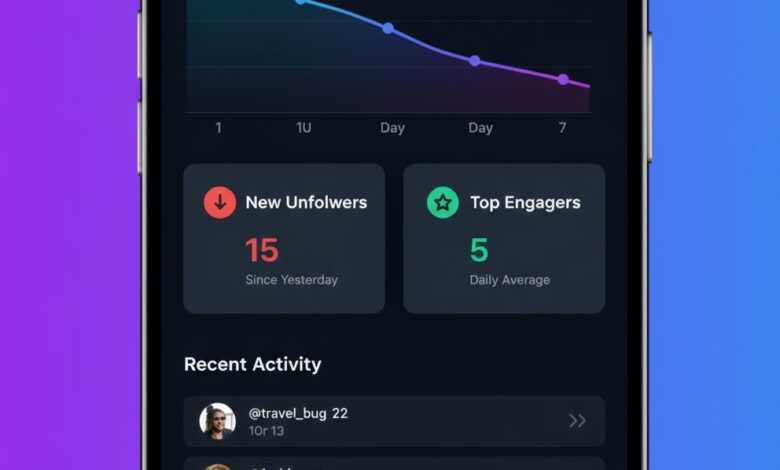Why People Unfollow on Instagram and How to Prevent It

You check your Instagram and notice your follower count dropped. Again. It stings a bit, doesn’t it? Before you spiral into overthinking every recent post, let’s talk about what’s really happening and how you can actually deal with it.
Here’s the thing: people unfollow on Instagram for dozens of reasons, and most of them have nothing to do with you personally. Understanding why this happens is the first step toward building a stronger, more engaged following that actually sticks around.
The Real Reasons People Hit Unfollow
Let’s be honest about what drives someone to unfollow an account. Sometimes it’s strategic, sometimes it’s emotional, and sometimes it’s purely practical.
Content overload tops the list. If you’re posting 15 Instagram stories a day about every meal, workout, and random thought, you’re probably overwhelming your followers’ feed. Social media platforms have trained users to crave quality over quantity. When your content becomes noise instead of value, people peace out.
The follow-unfollow game is alive and well. You’ve seen it: someone follows you, waits a few days, then unfollows once you follow back. It’s a growth hack that’s been around for years on Instagram, Twitter, and Facebook. These users are chasing numbers, not connections. When you get unfollowed by these accounts, you didn’t lose a real follower because you never had one.
Life happens. People decide to declutter their digital space. They’re cutting back on social media time, focusing on real life relationships, or simply doing a spring cleaning of their account. Maybe they unfollowed 200 people in one week. Maybe they only kept close friends and family. It’s not personal, it’s just their choice.
Then there’s the content mismatch. Someone followed you thinking you’d post about fitness, but now you’re sharing cat videos and selling training courses. Your page evolved, their interests didn’t. That’s actually a good reason to let them go. You want followers who are genuinely interested in what you’re putting out there.
How to Actually Track Who Unfollowed You
Instagram doesn’t make this easy. The platform won’t notify you when someone unfollows, and manually comparing your follower list each week is a nightmare. This is where tools like UnfollowGram come in handy.
The safest way to see who doesn’t follow you back on Instagram is using apps that don’t require your login credentials. UnfollowGram offers a secure method: you simply search for your Instagram username, and it analyzes your public data to show you who unfollowed you. No password needed, no security risks involved.
Want to understand the full picture? Check out how to see who unfollowed you on Instagram for a complete breakdown of safe tracking methods. The guide walks through exactly what information you can access without compromising your account security.
For iOS users, there’s also an Instagram Follower Tracker app download option that provides follower analytics right on your phone. These legitimate platforms serve your need to understand your audience without putting your account at risk.
The Security Problem Nobody Talks About
Here’s what surprised me when I started researching this topic: most unfollower apps are actually dangerous. I’m talking about the ones that ask for your Instagram password directly. Those apps can:
- Hijack your account completely
- Post spam content without your permission
- Access your DMs and private information
- Sell your login data to third parties
- Get your account permanently banned by Instagram
Instagram’s terms of service are crystal clear on this point. Third-party apps that require login credentials violate their rules. If caught, your account gets disabled. No warning, no second chances. Is knowing who unfollowed you worth losing years of content and connections? I didn’t think so.
The freedom to check who doesn’t follow me back on instagram shouldn’t come at the cost of your account security. That’s precisely why tools like UnfollowGram built their service around public data analysis instead of password access.
Why Getting Unfollowed Might Not Be Bad
Yup, you read that right. Losing followers can actually help your business or personal brand. Let me explain.
Instagram’s algorithm prioritizes engagement over follower count. If you have 10,000 followers but only 50 people interact with your posts, the algorithm assumes your content is boring. It stops showing your posts to the rest of your followers. You’re basically paying (in time and effort) to maintain a dead audience.
When inactive users or disinterested people unfollow, your engagement rate improves. Suddenly, a higher percentage of your remaining followers actually care about your content. The algorithm notices this and serves your posts to more people. Losing the wrong followers means winning with the right ones.
Ghost followers are another issue. These are fake accounts, bots, or inactive profiles that followed you at some point in the past but never engage. They hurt your metrics and make your account look less authentic. When these accounts disappear or get deleted by Instagram, don’t feel bad. You just got a free cleanup.
Building a Following That Doesn’t Want to Leave
Prevention beats cure, right? Here’s how to keep people from hitting that unfollow button.
Post with purpose. Before sharing anything, ask yourself: “Would I find this valuable or interesting if it showed up in my feed?” If the answer is “not necessarily,” skip it. Every post should either educate, entertain, or inspire. Anything else is filler, and your followers can smell filler from a mile away.
Respond to your community. When someone takes time to comment on your post, acknowledge them. This human connection is what separates accounts people stick with from accounts they forget about. Social media was built to connect people, not to broadcast into the void.
Stay consistent in your niche. If your page is about travel, keep it about travel. Sure, you can occasionally share personal stuff or talk about other topics, but your core content should deliver what your followers signed up for. When you drift too far from your original theme, people lose interest and move on.
Use Instagram stories strategically. Stories are great for behind-the-scenes content and real-time updates, but posting 30 stories a day will get you muted or unfollowed fast. Aim for 3-5 quality stories per day, max. Think of each story as a mini piece of valuable content, not a play-by-play of your entire day.
The 5-3-1 rule is worth knowing: for every five posts about your niche, three should be personal interaction, and one can be promotional. This balance keeps your feed interesting without turning into a constant sales pitch. People unfollow accounts that sell too hard or never show the human behind the brand.
When Someone You Know Unfollows
This is where it gets emotionally tricky. You realize a friend, colleague, or even family member unfollowed you. It can hurt, I’ll admit.
First, accept that it might not be about you at all. They could be taking a social media break, cleaning up their feed, or managing their screen time. In real life, your friendship or connection might be perfectly fine. Instagram isn’t the full measure of any relationship.
Second, decide if it’s worth addressing. If it’s a close friend and you’re genuinely concerned something happened between you, talk to them. Not on Instagram, but actually talk. “Hey, I noticed you unfollowed me on Instagram. Is everything okay?” Sometimes there’s a good reason, sometimes it’s an accident, and sometimes they’ll realize they didn’t mean to make it a big deal.
For acquaintances or professional connections, let it go. Not everyone needs to follow your page, and that’s completely fine. You have the freedom to curate your own social media experience, and so do they. Unfollowing isn’t disrespectful unless it’s part of a larger pattern of cutting you out of their life.
The Bottom Line on Instagram Unfollows
Getting unfollowed happens to everyone. Celebrities lose thousands of followers. Brands with million-dollar marketing budgets see people leave. Small businesses, influencers, and regular users all experience the same thing.
What matters is building a core audience that’s genuinely interested in your content. UnfollowGram helps you understand who’s staying and who’s going, giving you data to improve your strategy without compromising your security. Use that information to create better content, engage more authentically, and stop worrying about the numbers.
At the end of the day, social media metrics are just that: metrics. They measure one thing about your online presence, not your worth as a person or the quality of your real life relationships. Some people will unfollow, some will stick around, and new followers will discover you tomorrow.
Focus on the people who want to be there. Create content that serves them. The rest will sort itself out.




